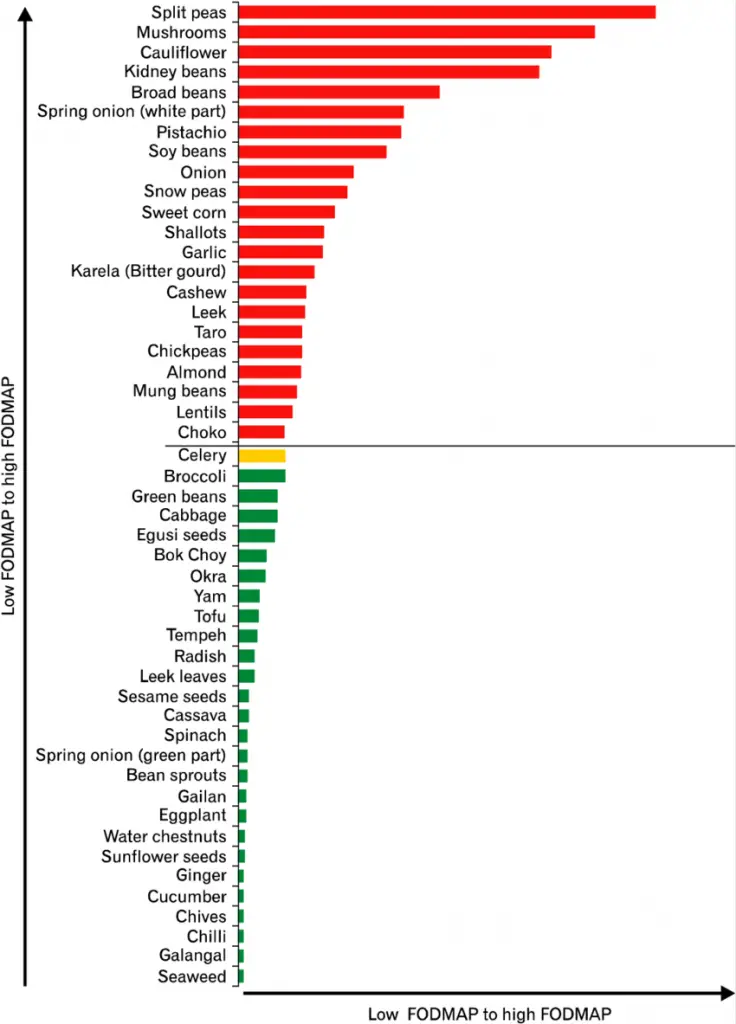FODMAP in Provolone: High or Low?
FODMAP (abbreviated as fermentable oligo-, di-, mono-saccharides and polyols) are dietary carbohydrates that are short chained and are therefore more resistant to digestion.
Why is it important to consider FODMAP?
Dietary nutrients can directly impact your physical, mental and digestive health. Studies indicates that certain high FODMAP foods (or diets with higher concentration of short-chain carbohydrates) can exacerbate digestive issues in some sensitive individuals. The pathophysiology revolves around:
- Delayed/ difficult digestion
- Poor absorption into blood stream
- Longer stay in the intestines that exposes these high FODMAP nutrients to gut bacteria which uses these nutrients as fuel resulting in the production of hydrogen gas.
The resultant effect is disturbing digestive symptoms like gas (also referred to as flatulence), stomach pain, bloating, and gut motility issues such as constipation or diarrhea.
Several research and clinical studies suggest that diet modification or reducing the intake of high FODMAP can greatly improve digestive health in some susceptible individuals such as those suffering from Irritable Bowel Syndrome (1).
Provolone and FODMAP: Should you eat?
It is a popular misconception that low FODMAPs means total elimination of dairy products from the diet, which is not true. In fact, some dairy products like cheese are actually very low in lactose (the fermentable sugar causing digestive issue). Does that mean you can consume all types of cheese on Low FODMAP diet?
The answer is no, as not all cheese varieties are created equal.
Compared to some other cheese varieties, Provolone is a low FODMAP (2). Provolone contains lactose that is made up of 2 sugar units, glucose and galactose. Lactose is the primary sugar found in all dairy products.
Provolone is a better cheese substitute in individuals suffering from IBS – a digestive issue that affects about 10-20% of the general population (1,3).
Unfortunately, most cases of IBS are undiagnosed.
According to a new study, about 75% of individuals suffering from irritable bowel syndrome can experience improvement of symptoms by consuming a Low FODMAP diet (1). It is imperative to mention that besides being a low FODMAP, provolone is also a great dietary source of vital proteins, calcium, phosphorous and Vitamin D.
Interestingly, this one is a lactose-free vegan provolone you can buy right away on Amazon.
FODMAP in cheese: Eat this much!
Susceptible individuals who have sensitivity to high FODMAPs can generally tolerate lactose in doses under 12-15 grams a day. However, if this dose is divided into several small portions and is consumed throughout the day, the disabling symptoms can be further prevented. Generally, any cheese that has 1 gram or less of lactose per 1 serving is considered safe for IBS patients. 1 serving of cheese is equivalent to 1-2 oz.
The lactose content of different cheeses varies and depends on various factors such as:
- Manufacturing technique of cheese
- Processing of cheese
- Aging or ripening of cheese
Ripened or aged cheeses like provolone are hard and have generally less than 0.5 g of sugar. In addition, as part of the processing technique, almost all the lactose content is drained off along with the whey, and remaining lactose is converted into the metabolic byproduct lactic acid as part of ripening or aging process.
Learn how to make your provolone at home.
How to calculate FODMAP of Provolone Cheese when grocery shopping?
Although, most reputed brands of provolone are safe to consume for IBS patients, you can further access the FODMAP by reviewing the nutritional facts on the packaging.
Production of cheese does not involve addition of external sugars, so the sugar content listed on the cheese packaging refers to lactose. While grocery shopping, if your preferred provolone cheese brand shows less than 1 gram of sugar per 1oz. of serving, it is low FODMAP as defined by the developers of the low FODMAP diet, the Monash University (4).
The dose or serving size also plays a major role. If you consume high doses or several servings of a low FODMAP, you may experience disturbing symptoms. The ideal/ recommended serving size of provolone cheese is 1.5 oz or 2-3 slices or 3 cubes.
Unless you have any other dietary restriction or allergies, provolone cheese is a good alternative to other dairy high lactose products to promote bone and body health. Some additional low FODMAP cheeses are, brie, cheddar, cottage cheese, feta cheese, Havarti, Monterey Jack, mozzarella
Other low FODMAP diets include:
- All spices and herbs
- All oils and fats
- Eggs, fish and meat
- Seeds and nuts such as sesame seeds, almonds, macadamia nuts, cashews, peanuts, pine nuts
- Fruits such as grapefruit, strawberries, bananas, passionfruit, melons, oranges, cantaloupe, raspberries, blueberries, grapes, kiwi, lemons, lime, mandarins
- Grains such as rice, sorghum, tapioca quinoa, corn, oats
- Vegetables such as green beans, kale, lettuce, alfalfa, chives, potatoes, radishes, carrots, celery, spring onion, squash, parsnips, spinach, eggplant, ginger, zucchini, turnips, sweet potatoes, tomatoes, yams, olives, bell peppers, cucumbers, bok choy

Some renowned brands of low FODMAP provolone cheese are; BelGioioso, Ken’s Market, Auricchio and Tillamook.
Also, I found this one on Amazon by Auricchio imported straight from Italy!
If you suffer from any food allergies (also for the doggy), it is highly recommended to see a doctor to access your health issue in detail with thorough examination and laboratory tests.
References:
- Cancarevic, I., Rehman, M., Iskander, B., Lalani, S., & Malik, B. H. (2020). Is There a Correlation Between Irritable Bowel Syndrome and Lactose Intolerance?. Cureus, 12(1).
- Canania, M. D. C. R. B. (2018). Lactose Intolerance: Common Misunderstandings. Ann Nutr Metab, 73(4), 30-37.
- Deeb, M. E., Chatila, R., Merhi, M., Hariri, E., & Sabbah, N. (2017). Irritable bowel syndrome: prevalence, risk factors in an adult Lebanese population.
- Barrett, J. S. (2017). How to institute the low‐FODMAP diet. Journal of gastroenterology and hepatology, 32, 8-10.

